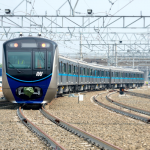According to the latest data from Indonesia’s Investment Coordinating Board (BKPM), investment realization (consisting of both foreign and domestic direct investment) in Indonesia grew 10.7 percent (y/y) to IDR 155.3 trillion in the third quarter of 2016. Cumulatively, investment realization in Indonesia stands at 453.4 trillion in the first nine months of 2016, achieving about 76 percent of the full-year target (IDR 594.8 trillion). Most likely, the BKPM’s full-year target will be achieved.
BKPM data, released on Thursday (27/10), show that foreign direct investment (FDI), contributed most to total direct investment in Indonesia in the January-September 2016 period. FDI was recorded at IDR 295.2 trillion, up 10.6 percent (y/y), in the first three quarters of the year. For its calculation BKPM uses the rupiah exchange rate that was set in the central government’s 2016 state budget. This rate was IDR 13,500 per US dollar. In reality, however, the rupiah has strengthened to nearly IDR 13,000 per US dollar.
Meanwhile, domestic direct investment (DDI) in Indonesia stood at IDR 158.2 trillion, up 18.8 percent (y/y) in the January-September 2016 period. Domestic investment in this period was primarily focused on the transportation, warehouses, telecommunication, basic chemicals, pharmaceutical and food sectors.
If we take a look at investment realization in the third quarter of 2016, FDI into Indonesia rose 7.8 percent (y/y) to IDR 99.7 trillion (this figure excludes investment in banking and the oil and gas sector), while DDI rose 16.3 percent (y/y) to IDR 55.6 trillion.
The biggest beneficiaries of FDI in Q3-2016 were Indonesia’s metal and electronic, mining, and property sectors. Singapore was the largest source of foreign investment.
Thomas Lembong, Chairman of BKPM, stated that his institution has introduced an integrated online information and processing system (SPIP-ISE) in 2014 which reduces the need for investors to meet government officials face-to-face. This policy makes the process more transparent, efficient, while there is limited opportunity for officials to request additional money from investors (so-called “under-the-table costs”). This makes Indonesia’s investment climate more attractive.
Lembong added that all ministries should raise efforts to safeguard legal certainty in Indonesia as well as to encourage investment realization in the regions outside the island of Java (Indonesia’s most populous island and the political and economic center of Indonesia). Investment realization outside Java rose to IDR 203.2 trillion in the January-September 2016 period (from IDR 180.7 trillion in the same period one year earlier). However, this only accounts for 44.8 percent of total investment realization in Indonesia.
It is also important that investment commitments result in actual construction and development. Not unoften, investment projects are challenged by various obstacles in the field (including land acquisitions problems, the availability of electricity, bureaucracy at the regional level, and the availability of skilled labor). The central and regional governments need to tackle these issues.
BKPM added that foreign and domestic investment realization in the January-September 2016 created 960,041 jobs. This shows the importance for Indonesia to attract more investment. According to the latest data from Statistics Indonesia (BPS), the nation’s unemployment rate stood at 5.5 percent of the total labor force, or 7.02 million people in absolute terms, in February 2016. The government under the leadership of Indonesian President Joko Widodo prioritizes investment in Indonesia and has therefore implemented a series of economic policy packages since September 2015 that include deregulation and fiscal incentives in order to boost investment.
Foreign and Domestic Investment in Indonesia (in IDR trillion):

source: indonesia-investment.com






